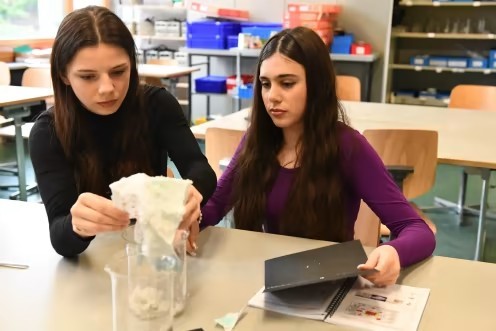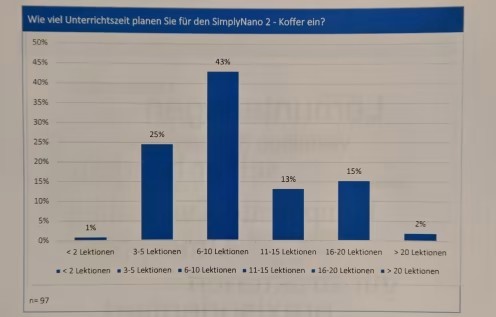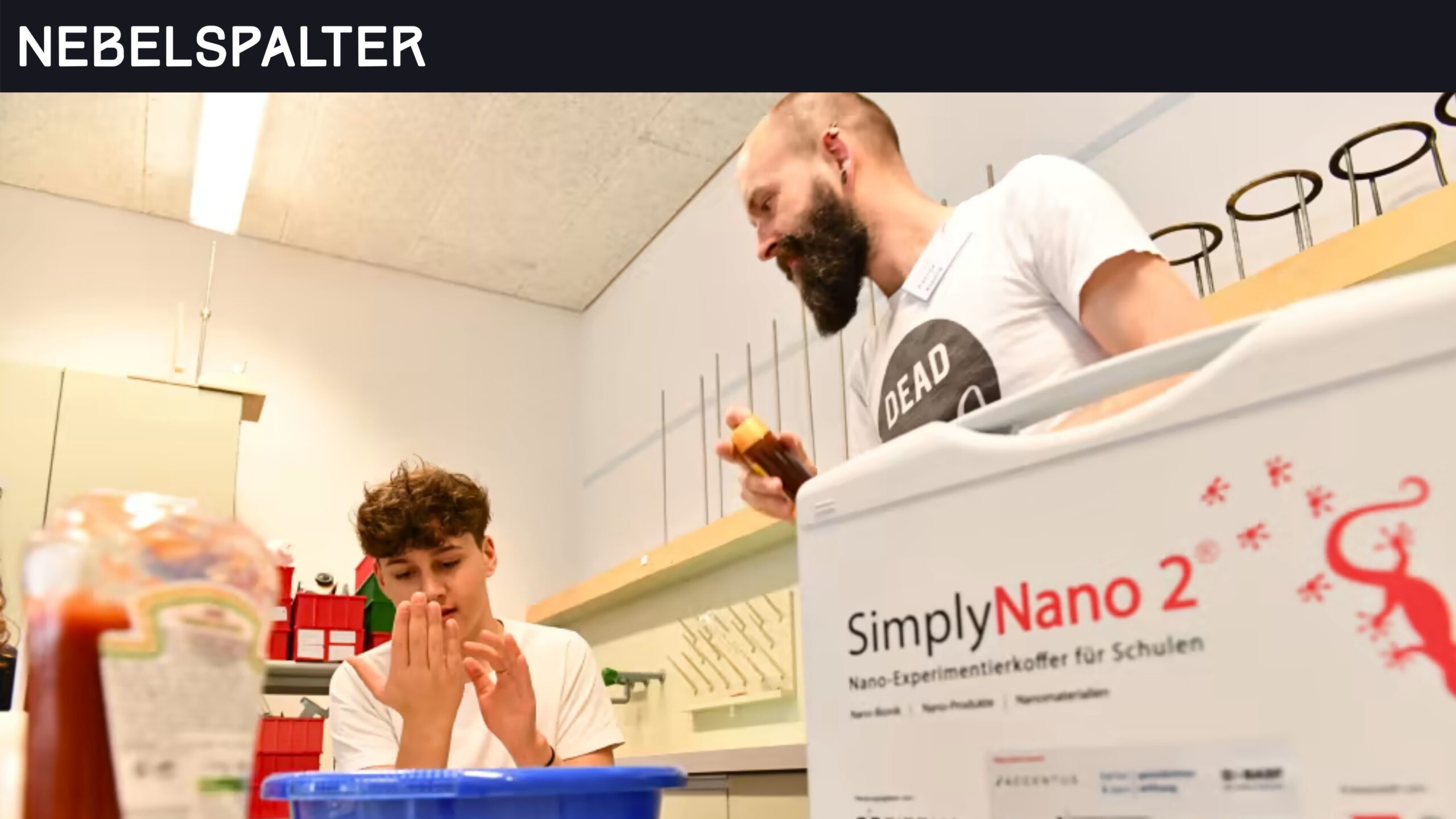A further development: The SimplyNano2 suitcase for secondary school students and high school students (Image: Daniel Wahl)
Private teaching materials project at elementary schools
Author: Daniel Wahl
Source: Nebelspalter; 16 May 2023, 18:11
They are new ways to recruit apprentices and get students interested in science: Biotech and food companies or pharmaceutical and chemical companies have developed a new learning kit that opens up the world of nanotechnology to secondary and high school students. The case contains 37 science experiments, a teacher’s manual, and student instructions for independent experimentation at three different levels of difficulty. Experiments are carried out in pairs or threes.
Currently, 880 cases have been delivered to schools in the cantons of Solothurn, Baselland and Basel-Stadt. The next step will be to equip schools in central Switzerland. The SimplyScience Foundation and 35 partner companies such as Novartis, Syngenta, Schaerer (coffee) and Mathys Medical are behind the project.
What’s important:
- The Nano suitcase is intended to help alleviate the shortage of skilled workers in technical professions.
- Continuing education courses at company sites build bridges between teachers and large companies.
- The schools receive attractive teaching material for the subject of nature and technology, which they have been lacking up to now.
“Syngenta still has international appeal, and we still have enough apprentices applying,” says Elisabeth Vock, human resources manager at the seed and pesticide producer. “For now,” she points out, because high school graduates are increasingly choosing to continue their careers in middle school rather than pursue apprenticeships. “That’s where the industry needs to make its presence felt to train tomorrow’s skilled workers – not just at career fairs or with the career counselor.”
The ingenious nano suitcase is putting the technical and scientific sector back on the map. Not only with the students, but also with the teachers, who can take up further training in nanotechnology at the suitcase in the respective companies. 121 teachers from Northwestern Switzerland have thus swapped the classroom with the laboratories of Syngenta or the University of Basel and come into an informal exchange with those companies that will offer lessons to their students. “At such continuing education courses for the experiments in the nano suitcase, questions such as, ‘What grade does my student need in math to have a chance at Syngenta?’ have also been discussed spontaneously.”
Enthusiasm on site
The SimplyScience Foundation wanted to demonstrate young people’s thirst for research, the enthusiasm for chemistry, mathematics, biology and physics that the suitcase is capable of awakening, right on site in a classroom in Basel.
At a group table, Dilara, Anastasia and Douaa disassemble a baby diaper, sprinkle the cotton powder into a measuring cup, covering the bottom a few inches. Then dyed water is poured into it – almost a liter. The cotton powder clumps into gel and retains moisture. A household paper, which may be placed on the gelatinous cardboard, hardly becomes wet. Astonishment on the faces of the young people.

At the other group table, two students cream their hands with a nano ointment and notice that the honey they spread on their palms does not stick together, but forms a drop. Hand washing does not work after that. The water beads up on the hands.
“This is much more exciting than language lessons. You can do something yourself,” says Dilara and gets the approval of her colleagues. It also receives them. She could imagine working where they do things like that, Dilara says.
Companies get access to schools
The school is now attended by countless advocacy organizations. Greenpeace offers teaching materials, the WWF wants to be present with material in the classroom at an early stage. Schools were equipped with the sex kit or the experiment kit. And now the nano suitcase is also currently available in eight German-speaking cantons in Switzerland. Too much? Often, schools keep such private commitments at bay, “public-private partnership” projects are suspect, or the teaching materials from the private sector end up in the teacher’s closet, where they gather dust forever.
What has the SimplyScience Foundation done differently? Because it’s not like that with the Nano case. 43 percent of teachers who want to use it use it during six to ten lessons in the already overloaded Curriculum 21; 29 percent use it even more frequently and 25 percent use it during three to five lessons, according to an evaluation by the SimplyScience Foundation.

It was important that the foundation received the support of the education directorates, says Christoph Meili, head of the SimplyNano project. There is no advertising for the companies on any learning materials. The aim is to promote an understanding of scientific and technical topics among children and young people with attractive teaching materials, says Meili. In addition, the acquisition of “competencies in new technologies” is a goal in the curriculum. However, there are no teaching aids for it. Therefore, the suitcase is welcome in schools, and it integrates with the curriculum.
It was important to him that he did not have to go to great lengths to gather the materials for the experiments, explains nature and technology teacher Patrick Aspäck. Diaper, water, honey – such he could easily get for the lessons. And the necessary chemicals or the corresponding nanoparticles are available in sufficient quantities so that there is easily enough for 30 experimental runs, says Aspäck.
The satisfaction level of teachers who use the case is exceptionally high. Statements such as “I find the experiments conducted in the course successful” are answered with 96 percent “completely agree” to “agree”.
